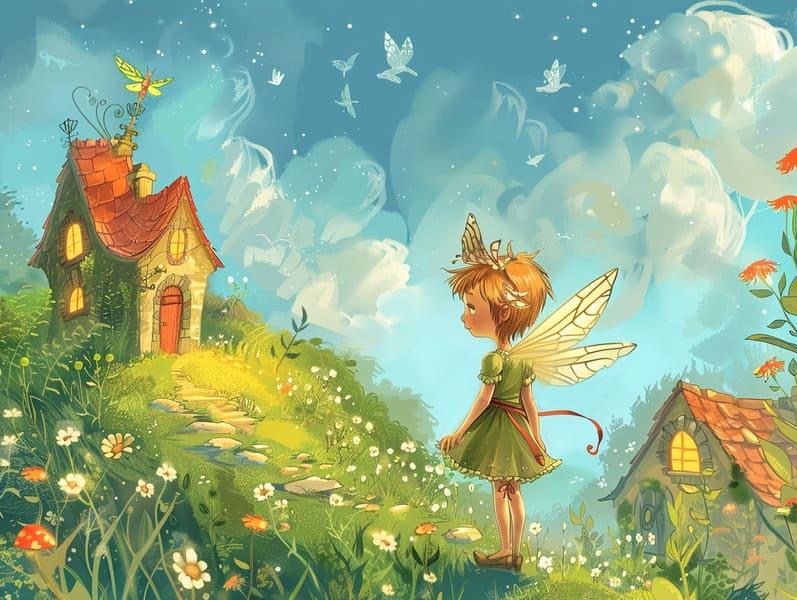The Beginning of Historical Fairy Tales and Their Unwavering Delight.
The Beginning of Historical Fairy Tales and Their Unwavering Delight.
Blog Article

Best fairy tales have ancient roots. These stories have been conveyed from one generation to the next far before they were ever transcribed. They originated from a variety of cultures, including Asian traditions. They were initially disseminated among grown-ups, often carrying themes and messages reflective of the societal norms and beliefs of the time.
The Grimm brothers, the two Grimm brothers, were among the first to compile and release many of these beloved fairy tales. Their compilation, "Grimm's Folk Tales," included tales like "Ashenputtel," "The Bread Crumb Trail," and "Snow White," which have since become cornerstones in the world of children's fairy tales. Similarly, Andersen's delightful narratives, such as "The Mermaid," and "The Duckling that Could," have won hearts worldwide, guaranteeing their place in the pantheon of famous fairy tales.
Though they are old, classic fairy tales remain as impactful as ever, especially as bedtime stories for kids. These delightful tales are now available in many formats, including colorful picture books, delightful animations, and internet fairy tales.
Their unwavering allure can be connected to several delightful features:
Important Morals: Ancient fairy tales often impart important moral lessons. Fairy tales like "The Story of the Boy Who Cried Wolf" teach the benefit of sincerity, while "The Tale of the Tortoise and the Hare" underline the benefits of persistence and unpretentiousness. These narratives offer young ones clear distinctions between virtue and vice, helping to shape their moral compass in a soft yet significant way.
Kindness and Comprehension: Old fairy tales frequently portray heroes facing problems and hurdles, inspiring kids to understand with their struggles and rally behind their triumphs. For instance, "Beauty and the Beast" demonstrates the necessity of looking deeper to acknowledge the true nature of a being, developing kindness and appreciation.
Cultural Knowledge: Many traditional fairy tales are imbued with the cultural contexts from which they sprang. Immersing in these stories can provide delightful insights into different ways of life, enhancing a sense of global respect and recognition.
Fantasy and Innovation: The fantastical elements in classic fairy tales—magical beings—promote children’s creativity. These stories move readers to mythical realms, promoting creative ideas and a sense of curiosity that persists a lifetime.
Ancient fairy tales are not only charming but also pedagogical. They act as enchanted tools in cultivating various cognitive and affective skills in young ones. When ancient fairy tales are narrated, they promote speaking abilities by presenting new lexicon and intricate sentence structures. This practice also boosts listening abilities and attentiveness, as children focus on every detail, ready to see what happens next.
Furthermore, exploring the themes and characters of traditional fairy tales can foster logical thinking and thinking skills. Little ones learn to discern patterns, foresee events, and comprehend cause and effect. These deliberations also assist kids communicate their thoughts and feelings, advancing their emotional intelligence.
In today’s modern era, the availability of online storybooks has made these tales more obtainable than ever. Internet resources and programs make available broad selections of timeless fairy tales that can be experienced or listened on anytime, anywhere. Fairy tales read out loud are particularly favored, sharing an fascinating method for kids to be a part of these entrancing tales. Spoken stories and voiced videos guide characters and settings to life, often supplemented by spellbinding sound effects and musical scores that improve the story journey.
The everlasting appeal of timeless fairy tales lies in their ability to transform to the present while holding onto their central messages. Contemporary versions of these fairy tales often show more representative characters and modern settings, making them accessible to today’s audience. However, the main ideas of bravery, charity, and justness remain unchanged, continuing to touch kids of all ages.
Traditional fairy tales also offer a sense of contentment and comprehensibility. They grant a well-ordered narrative with a clear beginning, middle, and end, often ending with the conclusion of conflicts and the triumph of goodness over badness. This predictability can be reassuring for kids, affording a sense of dependability in an always shifting world.
Traditional fairy tales continue to bewitch and edify new generations, maintaining their beauty and applicability in modern society. As kids' bedtime tales, they confer a perfect blend of fascination and comprehension, backing moral values, empathy, and creativity. The accessibility of online storybooks and the sought after status of fairy tales narrated certify that these timeless stories remain within reach to new generations.
By retaining and relating these tales, we continue to cherish the rich tapestry of legends and cultural heritage. Whether you are accessing a beautifully illustrated book, seeing a web-based library, or playing an sound book, the delight of popular fairy tales website is always within reach. These tales teach us of the timeless presence of tales and its ability to draw us together across eras and regions.
Be it you are seeing a colorful picture book, delving into a web-based collection, or listening through an read-aloud book, the charm of Grimm's fairy tales is always within reach.
These tales highlight of the timeless presence of storytelling and its ability to tie us across generations and cultures, making a tie that enchants and educates alike.